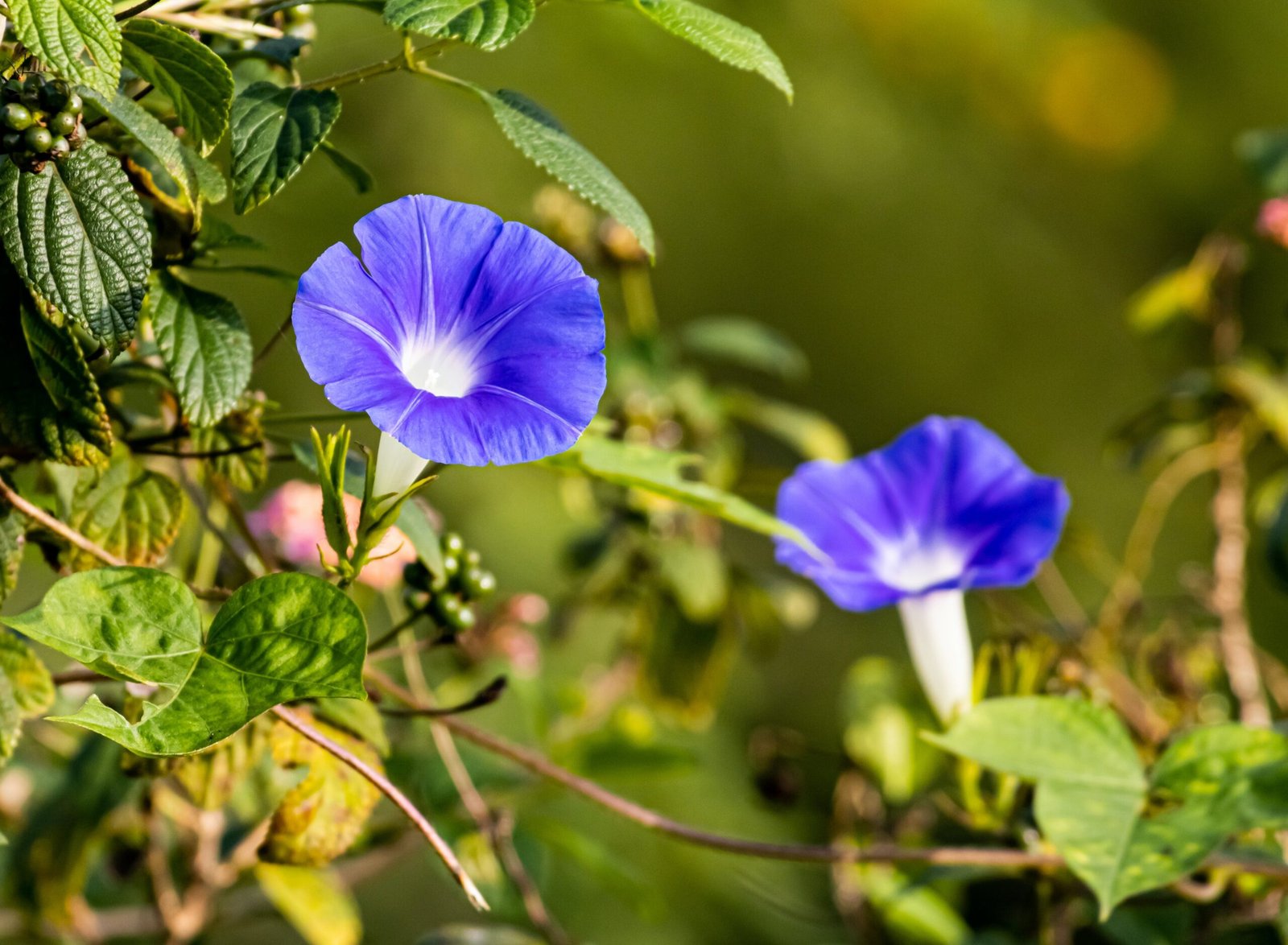- Lotus: How to Plant, Grow and Care for Lotus - 3 November 2023
- Zinnia: How to Plant, Grow and Care for Zinnia - 3 November 2023
- Coreopsis: How to Plant, Grow and Care for Coreopsis - 3 November 2023
Morning Glory, known for its vibrant and colorful flowers, is a fast-growing vine that belongs to the Convolvulaceae family.
About Morning Glory:
Morning Glory is a versatile plant that comes in various types, including Heavenly Blue, Grandpa Ott, and Venice Blue. These types differ in color and characteristics, but all share the same captivating beauty.
As an annual plant, Morning Glory goes through a complete life cycle in one year. It starts as a seed, germinates, grows foliage, produces flowers, and eventually forms seeds again. The bloom season for Morning Glory is from early summer to early fall, providing a burst of colorful flowers during this time.
Characteristics:
Morning Glory is a plant that attracts pollinators, such as bees, butterflies, and hummingbirds, with its vibrant flowers and sweet nectar. It is relatively easy to grow and maintain, making it a popular choice for gardeners of all experience levels. While not edible, Morning Glory flowers have a delightful fragrance that can enhance any garden. Moreover, this plant has an extended bloom time, ensuring a prolonged display of its exquisite flowers. Morning Glory is also commonly used as an ornamental plant due to its fast growth and ability to cover fences, trellises, and walls.
Growing Conditions:
Morning Glory thrives in well-draining soil and full sun exposure. It can tolerate a range of soil types, including sandy, loamy, and clay soils. This plant requires regular watering, especially during dry spells, to maintain its vigorous growth. Morning Glory can be grown as a vine or a bush, depending on the desired effect.
Resistance:
Morning Glory is generally resistant to deer and rabbit damage, making it a suitable choice for areas with these pests. However, it is important to note that Morning Glory can be susceptible to certain plant diseases, such as rust, fusarium wilt, downy mildew, and powdery mildew. Regular monitoring and proper care can help prevent and manage these issues.
| Season | Depth | Height | Spacing | US Hardiness Zone |
|---|---|---|---|---|
| Spring to Early Summer | 1/4 to 1/2 inches | 6 to 10 feet | 6 to 8 inches | 3 to 10 |
Plant Care Instructions
Light Requirement
Morning Glory plants thrive in full sun but can tolerate partial shade. They do not do well in full shade.
Water Need
Morning Glory plants prefer a moderate amount of water. They should be watered regularly, allowing the soil to dry out slightly between waterings.
Fertilizer
Morning Glory plants do not require heavy fertilization. However, you can use a balanced organic fertilizer such as compost, or a slow-release granular fertilizer. This will provide the necessary nutrients without overstimulating growth.
Pruning
Pruning Morning Glory plants is not necessary for their growth. However, you may want to remove any dead or damaged leaves or flowers to keep the plant looking tidy.
Toxicity
Morning Glory plants are not known to be toxic to humans or pets. However, it’s always a good idea to keep them out of reach of curious children or pets.
Common Issues
Common issues with Morning Glory plants include aphids, spider mites, and powdery mildew. Regularly inspect the plants for signs of these pests or diseases and take appropriate measures to control them.
Culinary Benefits:
- Morning glory flowers and leaves are edible and can be used in various dishes.
- The flowers can add a pop of color and a mild flavor to salads.
- They can be sautéed or stir-fried as a vegetable.
- Some people even use morning glory leaves as a spinach substitute.
- Seeds of the morning glory plant can be roasted and used as a coffee substitute.
Medicinal Benefits:
- Morning glory has been used in traditional medicine for its various health benefits.
- It is believed to have diuretic properties, which may help with urinary problems and kidney health.
- The plant contains alkaloids that have a sedative effect, which can aid in relieving anxiety and promoting better sleep.
- Some studies have shown that morning glory extracts may have antioxidant and anti-inflammatory properties.
- It is also used in some traditional medicine systems to treat skin conditions like burns and wounds.
Companion Plants for Morning Glories:
1. Nasturtiums: These vibrant and trailing flowers make a beautiful companion for morning glories, and can help deter pests like aphids.
2. Marigolds: Known for their vibrant colors, marigolds not only add beauty to your garden but also attract beneficial insects that can control pests.
3. Snapdragon: With their tall and spiky blooms, snapdragons create a stunning contrast to the delicate morning glory flowers.
4. Sweet Alyssum: This low-growing flower serves as a great ground cover for morning glories, making your garden look more lush and vibrant.

